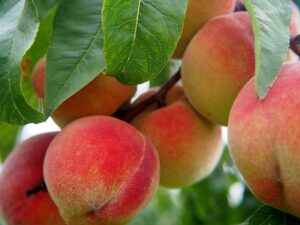Introduction
Carbohydrates are essential macronutrients that provide energy for the body. They are composed of three elements: carbon, hydrogen, and oxygen. In this article, we will explore the elements that make up carbohydrates in more detail.
Carbon
Carbon is the primary element found in carbohydrates. It is the building block of all organic compounds, including carbohydrates. Carbon atoms form the backbone of carbohydrate molecules, giving them their unique structure. The carbon atoms in carbohydrates are bonded together in a chain or ring-like structure.
Hydrogen
Hydrogen is another essential element in carbohydrates. It is bonded to carbon atoms in the carbohydrate molecule. Hydrogen atoms play a crucial role in determining the overall structure and properties of carbohydrates. They contribute to the stability of the molecule and participate in chemical reactions.
Oxygen
Oxygen is the third element found in carbohydrates. It is also bonded to carbon atoms in the carbohydrate molecule. Oxygen atoms contribute to the formation of functional groups in carbohydrates, such as hydroxyl groups (-OH). These functional groups are responsible for various chemical reactions and interactions of carbohydrates in the body.
Monosaccharides
Monosaccharides are the simplest form of carbohydrates and consist of a single sugar unit. They are the building blocks from which larger carbohydrates are formed. The most common monosaccharides include glucose, fructose, and galactose. These monosaccharides contain carbon, hydrogen, and oxygen in a ratio of 1:2:1.
Disaccharides
Disaccharides are formed when two monosaccharides join together through a chemical reaction called dehydration synthesis. The most well-known disaccharides include sucrose (glucose + fructose), lactose (glucose + galactose), and maltose (glucose + glucose). Disaccharides also contain carbon, hydrogen, and oxygen in the same ratio as monosaccharides.
Polysaccharides
Polysaccharides are complex carbohydrates composed of long chains of monosaccharides. They serve as energy storage molecules in plants and animals. Examples of polysaccharides include starch, glycogen, and cellulose. These polysaccharides are made up of repeating units of monosaccharides and contain carbon, hydrogen, and oxygen.
Conclusion
Carbohydrates are composed of carbon, hydrogen, and oxygen. These elements form the basic structure of carbohydrates, from simple sugars like monosaccharides and disaccharides to complex polysaccharides. Understanding the elements present in carbohydrates helps us appreciate their role as a vital source of energy in our diet.
References
– National Center for Biotechnology Information. (2021). Carbohydrates. Retrieved from https://www.ncbi.nlm.nih.gov/books/NBK541062/
– Khan Academy. (2021). Carbohydrates. Retrieved from https://www.khanacademy.org/science/biology/macromolecules/carbohydrates-and-sugars/a/overview-of-carbohydrates












